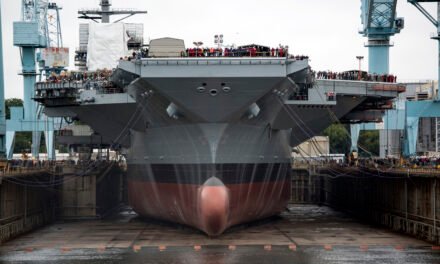Defense contractors provide lifecycle support for military equipment by managing and sustaining systems throughout their operational lifespan, from initial design and production to maintenance, modernization, and eventual decommissioning or disposal. This comprehensive approach ensures that military assets remain functional, reliable, and mission-ready while minimizing costs and downtime. Here’s how defense contractors support the lifecycle of military equipment:
1. Initial Design and Development
- Role: Ensure equipment meets performance, reliability, and maintenance requirements.
- Key Activities:
- Collaborate with military clients to define operational specifications.
- Incorporate modular designs to facilitate future upgrades and maintenance.
- Perform rigorous testing to ensure compliance with military standards.
- Example:
- The design of stealth aircraft like the F-35 Lightning II incorporates features to simplify maintenance and enhance operational readiness.
2. Production and Assembly
- Role: Manufacture equipment with quality control processes to ensure durability and reliability.
- Key Activities:
- Use advanced manufacturing techniques like 3D printing and automation for precision.
- Implement robust quality assurance (QA) protocols to meet stringent military standards.
- Establish spare parts production lines for ongoing support.
- Example:
- Contractors producing tanks, such as the Abrams M1A2, ensure that parts are standardized for easy replacement.
3. Deployment and Integration
- Role: Ensure smooth integration of equipment into military operations.
- Key Activities:
- Provide training to military personnel on operating and maintaining the equipment.
- Deliver technical documentation, including user manuals and maintenance guides.
- Assist with initial deployment, including system testing and calibration.
- Example:
- Contractors deploying missile defense systems like Patriot PAC-3 offer operational training and installation support.
4. Maintenance, Repair, and Overhaul (MRO)
- Role: Keep equipment operational and extend its service life.
- Key Activities:
- Perform scheduled maintenance, such as engine overhauls or software updates.
- Provide unscheduled repair services for damaged or malfunctioning components.
- Offer predictive and condition-based maintenance to prevent unexpected failures.
- Example:
- Contractors supporting naval fleets like the Arleigh Burke-class destroyers provide shipyard services for periodic overhauls.
5. Modernization and Upgrades
- Role: Adapt equipment to meet evolving operational and technological requirements.
- Key Activities:
- Retrofit systems with advanced components, such as updated sensors, avionics, or weapons.
- Upgrade software to improve cybersecurity and integrate with newer platforms.
- Enhance performance through design modifications, such as improved armor or fuel efficiency.
- Example:
- The modernization of the B-52 Stratofortress involves upgrading its radar systems and integrating new engines.
6. Supply Chain and Logistics Support
- Role: Ensure the availability of spare parts, consumables, and critical components.
- Key Activities:
- Manage global supply chains to deliver parts quickly and efficiently.
- Maintain inventory and stockpiles of critical components in strategic locations.
- Use advanced tracking systems to monitor the movement and availability of parts.
- Example:
- Contractors supporting the F-22 Raptor ensure timely delivery of hard-to-source components through efficient logistics networks.
7. Training and Technical Support
- Role: Build operator and maintainer proficiency to optimize equipment usage.
- Key Activities:
- Develop and deliver comprehensive training programs, including simulators and hands-on exercises.
- Provide ongoing technical support, such as troubleshooting and field service representatives.
- Offer remote assistance and digital solutions for real-time problem resolution.
- Example:
- Contractors use flight simulators to train pilots on advanced aircraft like the Eurofighter Typhoon.
Future Trends in Lifecycle Support
- Digital Twins:
- Virtual replicas of equipment enable predictive maintenance and real-time performance analysis.
- Additive Manufacturing (3D Printing):
- On-demand production of parts reduces logistics challenges and costs.
- Artificial Intelligence (AI):
- AI-driven analytics improve fault detection and enhance decision-making for upgrades.
- Autonomous Maintenance Systems:
- Robotics and automation reduce the need for manual interventions in repairs and maintenance.













